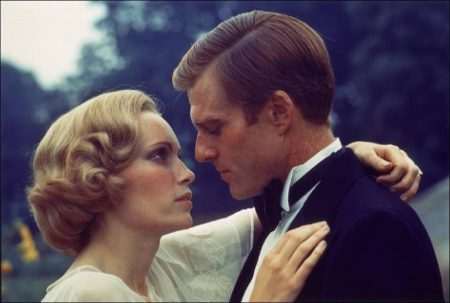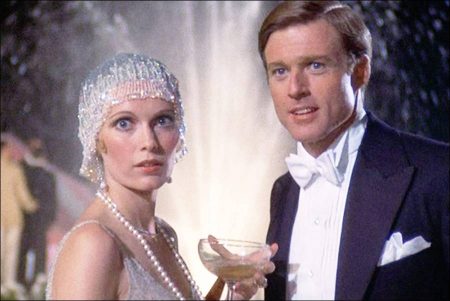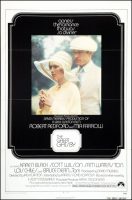Taglines: Gone is the romance that was so divine.
The Great Gatsby movie storyline. Nick Carraway, a young Midwesterner now living on Long Island, finds himself fascinated by the mysterious past and lavish lifestyle of his neighbor, the nouveau riche Jay Gatsby. He is drawn into Gatsby’s circle, becoming a witness to obsession and tragedy
The Great Gatsby is a 1974 American romantic drama film based on F. Scott Fitzgerald’s 1925 novel of the same name. It was directed by Jack Clayton and produced by David Merrick from a screenplay by Francis Ford Coppola. The film stars Robert Redford in the title role of Jay Gatsby, along with Mia Farrow, Sam Waterston, Bruce Dern, Karen Black, Scott Wilson and Lois Chiles, with Howard Da Silva (who previously appeared in the 1949 version), Roberts Blossom and Edward Herrmann.
The Rosecliff and Marble House mansions in Newport, Rhode Island, were used for Gatsby’s house while scenes at the Buchanans’ home were filmed at Pinewood Studios in Buckinghamshire, England. One driving scene was shot in Windsor Great Park, UK. Other scenes were filmed in New York City and Uxbridge, Massachusetts.
Film Review for The Great Gatsby
The Great Gatsby is a superficially beautiful hunk of a movie with nothing much in common with the spirit of F. Scott Fitzgerald’s novel. I wonder what Fitzgerald, whose prose was so graceful, so elegantly controlled, would have made of it: of the willingness to spend so much time and energy on exterior effect while never penetrating to the souls of the characters. It would take about the same time to read Fitzgerald’s novel as to view this movie — and that’s what I’d recommend.
The movie is “faithful” to the novel with a vengeance — to what happens in the novel, that is, and not to the feel, mood, and spirit of it. Yet I’ve never thought the events in The Great Gatsby were that important to the novel’s success; Fitzgerald, who came out of St. Paul to personify the romance of an age, was writing in a way about himself when he created Gatsby. The mundane Midwestern origins had been replaced by a new persona, by a flash and charisma that sometimes only concealed the despair underneath. For Fitzgerald, there was always something unattainable; and for Gatsby, it was Daisy Buchanan, the lost love of his youth, forever symbolized by that winking green beacon at the end of her dock.
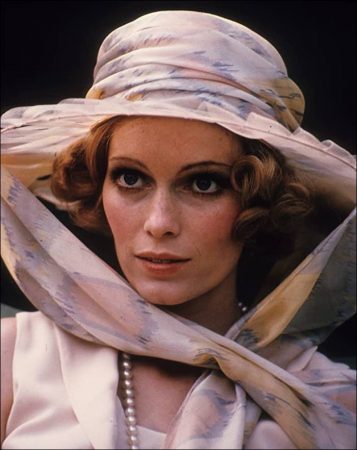
The beacon and the other Fitzgerald symbols are in this movie version, but they communicate about as much as the great stone heads on Easter Island. They’re memorials to a novel in which they had meaning. The art director and set decorator seem to have ripped whole pages out of Fitzgerald and gone to work to improve on his descriptions. Daisy and her husband, the ruthless millionaire Tom Buchanan, live almost drowning in whites, yellows, and ennui. Tom’s mistress Myrtle and her husband, the shabby filling station owner George, live in a wasteland of ashes in Fitzgerald’s novel; in the movie, they seem to have landed on the moon.
All of this unfeeling physical excess might have been overcome by performances. But the director, Jack Clayton, having assembled a promising cast, fails to exploit them very well. When the casting of Robert Redford as Jay Gatsby was announced, I objected because he didn’t fit my notion of Gatsby: He was too substantial, too assured, even too handsome. I saw him as Tom Buchanan, and somebody else as Gatsby (Jack Nicholson, maybe, or Bruce Dern — who plays Tom).
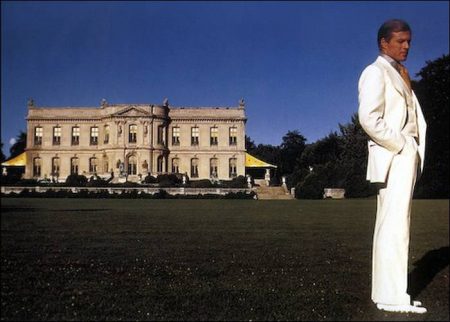
Having seen the movie, I think maybe I was wrong: Redford could have played Gatsby. I’m not even sure it’s his fault he doesn’t. The first time Clayton shows us Gatsby, it’s a low-angle shot of a massive figure seen against the night sky and framed by marble: This isn’t the romantic Gatsby on his doomed quest, it’s Charles Foster Kane. A scene where Gatsby reaches out as if to snatch the green beacon in his hand is true to the book, but the movie’s literal showing of it looks silly.
These hints of things to come lead up to two essential scenes in which Clayton fails to give us a Gatsby we care about. The first is the initial meeting between Gatsby and Nick (Gatsby wants Nick, his neighbor and Daisy’s cousin, to invite her to tea so they can meet again). Redford is so inarticulate and formal in this scene with Nick that we laugh; it’s the first time we hear him talk, and he’s so mannered that the acting upstages the content of the scene. Doesn’t that have to be Clayton’s fault?
The Great Gatsby (1974)
Directed by: Jack Clayton
Starring: Robert Redford, Mia Farrow, Bruce Dern, Sam Waterston, Karen Black, Scott Wilson, Lois Chiles, Kathryn Leigh Scott, Regina Baff, Vincent Schiavelli, Patsy Kensit, Roberts Blossom
Screenplay by: Francis Ford Coppola
Production Design by: John Box
Cinematography by: Douglas Slocombe
Film Editing by: Tom Priestley
Costume Design by: Theoni V. Aldredge
Set Decoration by: Peter Howitt, Herbert F. Mulligan, Philip Smith
Art Direction by: Robert W. Laing, Gene Rudolf
Music by: Nelson Riddle
MPAA Rating: None.
Distributed by: Paramount Pictures
Release Date: March 29, 1974
Views: 179
